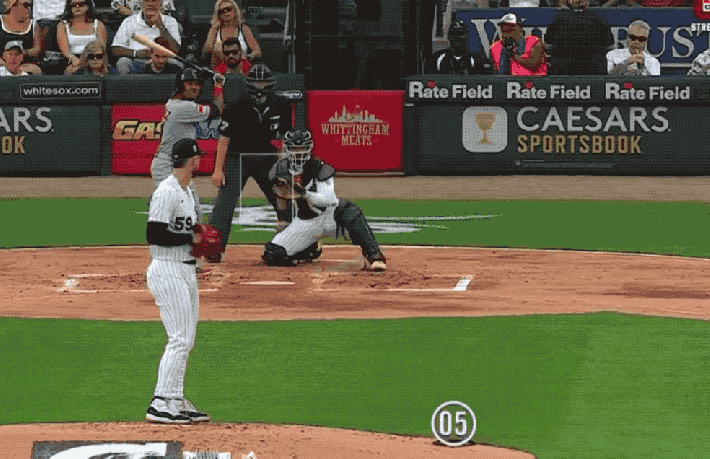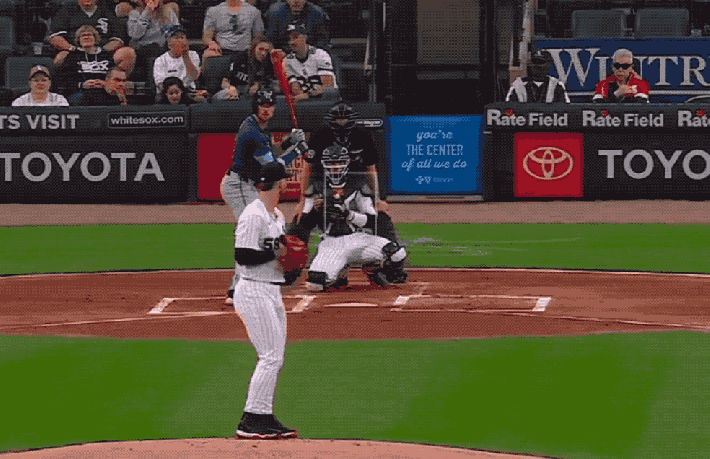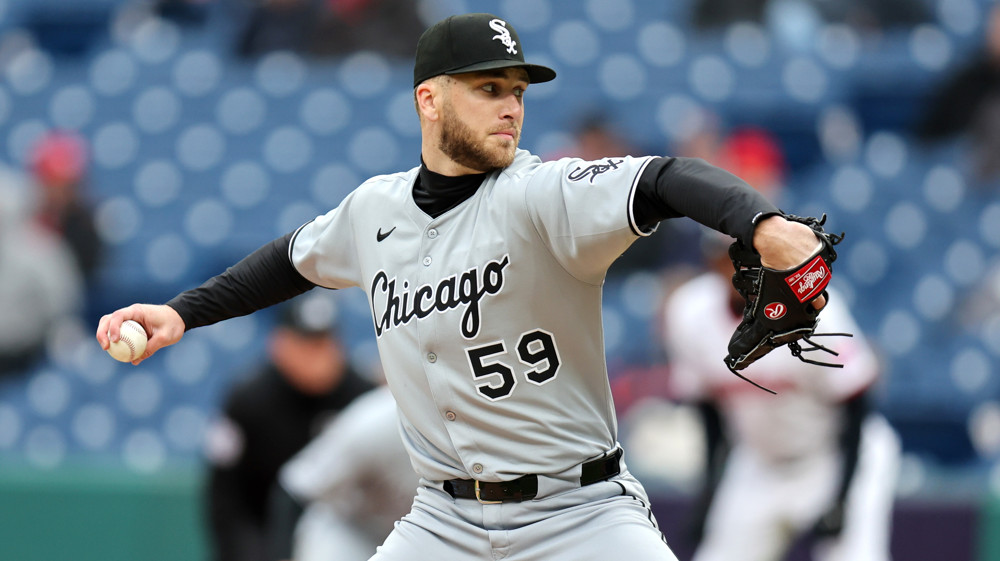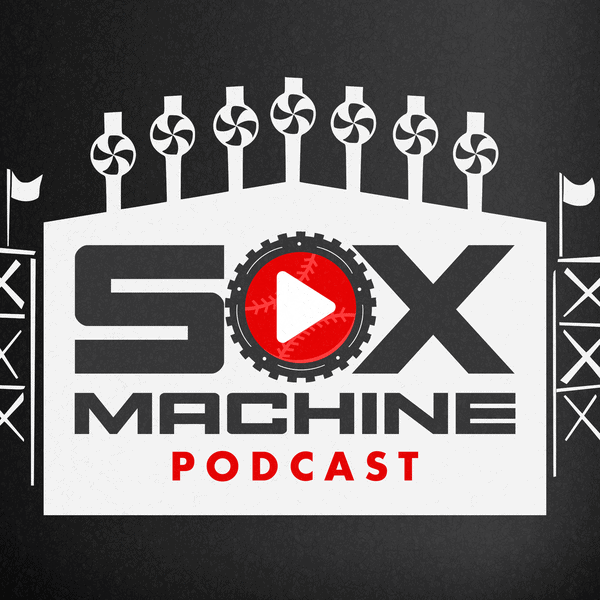Sean Burke's return to the White Sox rotation didn't quite have the fanfare of his Opening Day start. It was announced with a roster move alongside Dan Altavilla's DFA, rather than a social media graphic. At this point, even Burke was more inclined to treat it as another turn in the journey than a triumph.
"I've had times where I thought I'm the best pitcher on Earth, and I've had times where I thought I'm the worst pitcher on Earth, so just trying to find some middle ground and keeping the belief in myself," Burke said. "Just knowing that when I'm healthy, I have the ability to do what I want to do. It's been kind of a roller coaster but I don't think the belief level has changed."
When he walked the bases loaded in his second inning of work after allowing a solo shot in the first Wednesday night, the potential seemed to loom for mirroring Jonathan Cannon's short and clunky outing before a return to Charlotte. Also looming was Wikelman González, whom Will Venable had warming early.
After Burke allowed a solo shot to Carson Williams to turn the lineup over for a third look at him, he was essentially working batter to batter. One of the items that comforted Burke upon his surprising option to Charlotte last month, was the message from team leadership that his 117⅔ innings of a 4.28 ERA -- a rookie starter keeping his head above water in many respects -- was below their expectation level for his talent. But it also means a 4 ⅓ IP, 5 H, 3 ER, 4 BB, 5 K, 2 HR performance, bloodied further by an inherited run scoring, secured no immediate assurances.
"Yeah, I hope so," Burke said with a grin postgame when asked if he expected to stay in the majors afterward.
"With the walks, it's tough to sustain that," Venable noted, before expanding into praise. "I thought he did a nice job once those first couple innings were behind him."
Burke admitted being upset when he was optioned on Aug. 18, but shrugs while pointing out that any self-identified big leaguer would be, least of all when it involves being wrested out of a clubhouse he enjoys and now shares with his close friend Colson Montgomery. But he stipulates he was disappointed with the state of affairs given his ambitions to be an impact starter, rather than arguing with the assessment that he's not as far along as he'd like to be.
Yet while his ugly Charlotte numbers (7.82 ERA) might resemble a tiring, struggling rookie scuffling in a pitcher's nightmare of a home park at the dispiriting end of a long season, Burke returned to Chicago and hit 99.8 mph on the radar gun for the hardest pitch of his big league career. He says it's residue of an adjustment at the end of his Charlotte run that he hopes can be meaningful for the long term.
"You look at the course of your career, hopefully this is my worst year as a pro, or worst year as a big leaguer, and it's only up from here," Burke said. "I think the one adjustment I made was huge, and I know that my mindset last week was regardless of what happens for the rest of the year, I'm glad I was able to find that, make that adjustment so I can build off that going forward. But now that I'm back here, I'm happy to showcase that."
Despite Burke saying his delivery tweak came from comparing his own video against that of some pitchers he throws similar to, it isn't the most visually standout thing. But Burke felt he is better able to "unwind my arm path" when he can "have my hips be under me, and being able to stay in my load and ride my hips out down the mound."


The heightened velocity is a nice helpful indicator to recognize when Burke is operating closer to maximum capacity, but he thinks his new emphasis on riding his hips to a straight line to the plate is aiding his command, too. The White Sox have listed Burke as the probable starter for Monday against the Orioles, and that he was going to get at least one more turn in the rotation was already heavily suggested that he was still in the clubhouse Thursday morning, meeting with pitching coach Ethan Katz. In part, they discussed how his delivery feeling easier means that some of Burke's second inning misses Wednesday signaled that he has to undo some of the compensatory habits he had picked up over the season.
"A big emphasis for me this year is getting the ball to the glove side," Burke said. "I felt like a little bit in the beginning of the year, I was kind of fighting myself to get the ball there, so I was really trying to emphasize getting my body, getting my arm to that half of the plate. But now that I feel back in sync and I feel like my body is unwinding and rotating better, I almost have to ditch that thought of forcing the ball there and just letting myself kind of flow. I'll get those little misses off to the side, off to the glove side and I don't really need to force the ball there."
Burke's velocity was the more noticeable import from his time in Charlotte, less so the changeup that looked effective in his last Triple-A start. But alongside renewed confidence in his command, Burke is sounding pretty comfortable with the idea that his changeup stands ready to clear up the inefficiency issues his fastball-curveball attack has been having with left-handers, compared to the hesitance to insist upon it when he first arrived in Charlotte.
To provide an example of what he means by that, when asked about throwing the changeup three times Wednesday, Burke replied readily:
"I used it the perfect amount."
In the larger family of changeup grips, Burke is a supinator who uses seam effects just like Davis Martin and Shane Smith. But for him, the pitch emerges when he finds himself stuck in a dead end at-bat, and probably not much before.
"I’m able to get an out on that pitch and weak contact, I would much rather have that and save myself some pitches then trying to go beat them with two pitches and letting them kind of just flick stuff foul until they get a good pitch," Burke said. "It’s more in Triple-A, I wanted to throw 10 to 12 of these a game and see how it’s playing and how it feels. But read the at-bat: If a guy is fouling fastballs over our dugout, I’m not going to throw him a changeup as a gift. Just reading the at-bat and trying to set up the pitch different ways so they are not able to sit on stuff."
A short and statistically unstable path to a passable outing Wednesday in many ways looked too much like the work the White Sox felt Burke could improve upon in Charlotte. But a boost in stuff has a way of buying more patience for the command Burke believes is coming alongside it, and he'd like to take advantage of a suddenly better run environment in Chicago for pitching your way through a plan for improvement. He sees his team turning a corner in competitiveness, and is expecting to fall in formation.
"There are times where I think last year too, obviously I didn’t have a ton of time up here, but talking to some of the guys, they felt like they had to be perfect almost or like put up zeroes every single inning," Burke said, "Now, me and Davis [Martin] were talking, we give up two or three runs, just keep your team in the game, go five, or six innings and the offense will pick you up."






